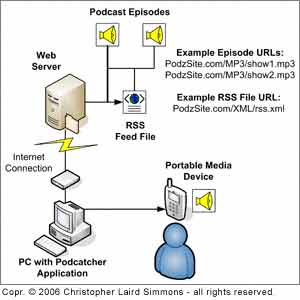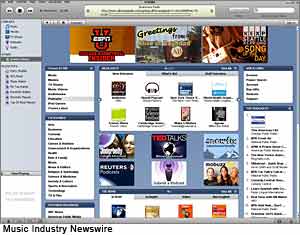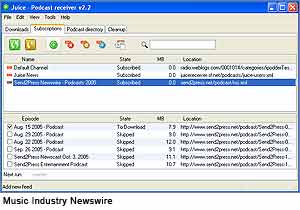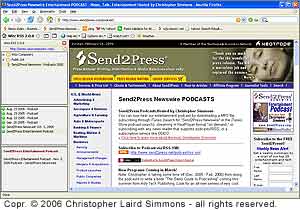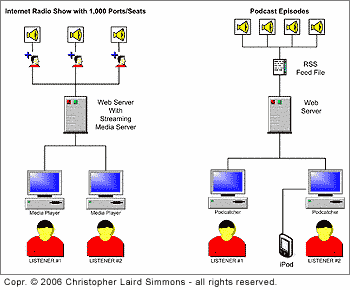REVIEW: The concept of the so-called workstation keyboard is certainly not new; with a wide range of current such products on the market from big guns like Korg, Roland and Yamaha, stretching back in time to the Korg M-1. These products seek to fill the needs of the “one keyboard does all” set-up, for composing, comping, or touring, and may include ROMpler sound sets, virtual analog, drum sounds, on board sampling, multi-track MIDI sequencing, built-in FX; and more often these days, some level of audio recording capability.
The Timbaland Special Edition NeKo from Open Labs is a truly unique instrument, part keyboard, part PC DAW, part virtual instrument player, part DJ performance control station. It is perhaps, the ultimate expression of the workstation concept, because it finally brings together all the elements needed to play, compose, record and produce modern music; and with the advent of more affordable and more powerful computer parts, the NeKo TSE is one of the most powerful keyboards of any kind ever built.
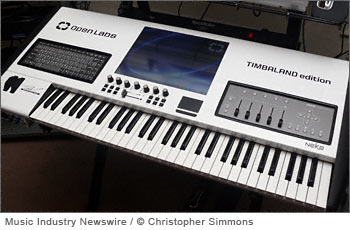 I’ve been using MIDI gear since it was invented, and this is perhaps the coolest thing since sliced bread, or perhaps since electronic music instruments began talking to each other and learning to do more than make noises all alone. But is it right for you? What other options are out there? Does it work as advertised? Well, as a recent new owner of one of these bad boys, let me tell you the tale of a fateful trip into the land of buying and using such beasts as these.
I’ve been using MIDI gear since it was invented, and this is perhaps the coolest thing since sliced bread, or perhaps since electronic music instruments began talking to each other and learning to do more than make noises all alone. But is it right for you? What other options are out there? Does it work as advertised? Well, as a recent new owner of one of these bad boys, let me tell you the tale of a fateful trip into the land of buying and using such beasts as these.
The Back Story
Into this arena of “workstation” products, a few years back, came a bunch of folks out of Austin Texas who had the idea to take this multi-purpose keyboard idea a step further, or perhaps reinvent the category, and combine the idea of a workstation keyboard with a PC; then put it all together as a value-add product. These folks, headed by founder Victor Wong, called themselves Open Labs, and their initial products were pricey and yet innovative. Some “got it” right away, and Open Labs has developed a core following over the past few years, in much the same way products like the Muse Receptor have their adherents and detractors.
The initial products included the Open Labs MiKo and NeKo; with the MiKo being a 37-key iteration, and the NeKo being a 61-key (or larger) iteration. These workstations included a quality key action (from Fatar, using the same wonderfully playable actions found in the Kurzweil line), control surface for mixing or controlling ADSR in plug-ins, PC keyboard for data entry, a touch-sensitive 15-inch LCD screen (touch panel), and custom plug-in navigation controls. The “open” part of the equation came in when they chose to use open source and “affordable” applications that run under Windows XP, for sequencing, recording, and virtual instruments.
They cleverly took Windows, put a custom “shell” GUI (graphical user interface) on top of that, and made easy to use “kiosk style” on-screen buttons to get to the most used functions a finger touch away. So, inside the “keyboard” was not the typical circuit board with custom chips and I/O from a music instrument manufacturer, but your everyday hand built AMD or Intel PC motherboard, memory, hard drive, video, and a high quality off-the-shelf audio and MIDI interface with multiple I/O and headphone support.
The whole really was much more than the sum of its parts. Arguably the one downside was the high cost of computer parts at the time. Today, 4GB of high quality RAM is the same cost as 1GB of second-tier memory three years ago, and a multi-core Intel CPU is the same price as what a single core processor once cost; more CPU power means you can run that big reverb along side your dozen virtual instruments all while recording live vocals, and not having it crash. This also includes cost of motherboard, hard drive storage, and the rest. Because of the cost of using high quality parts, and building everything by hand, an Open Labs product could easily run in the $8K range, which put it up there with products like Korg’s OASYS workstation and, well, there really wasn’t anything else like the NeKo or MiKo.
Thanks to the fact they were on to something, a lot of musicians doing good (read: successful) could afford to buy something like this; because they saw the value in the final product and that it did, indeed, fit a need that many recording artists, particularly keyboard players, could “grok.” Artists like Keith Emerson, Sheila E, Dave Cohen, Lil Jon, Jesse Carmichael (of Maroon 5), Karl “Charlie” Steinberg (father of Cubase software), and producer Timbaland (among many others, see: http://openlabs.com/artists.html) all use Open Labs products.
I always thought the product was a good idea, but had been turned off by the high price and the hands-on understanding of the downside to having an overheating Pentium or AMD PC inside a keyboard; I don’t have air conditioning and actually melted a DAW workstation due to the “run hot” properties of the then state of the art Intel Pentium IV. Ironically, I ended up buying a Korg OASYS 88, which I actually hated and sold less than 6 months later.
Enter the NeKo Timbaland Edition
When Open Labs announced the new version of their product, developed with producer Timbaland, I had just kicked the OASYS out of my studio (I was so disappointed with the OASYS, I could write a treatise on it, but will spare you), and so was sensitized to this new version. I put in an order for the 61-key NeKo after sending off some techie questions to Open Labs (who responded quickly and coherently), and had to wait about 10 days as there was already a waiting list.
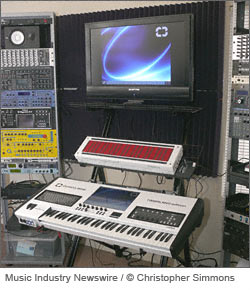 Whether you know who Timbaland (timbalandmusic.com) is or not, it’s useful to know that what he brought to the table in working with Open Labs was the desire for a more streamlined keyboard case decked out in shiny all-white livery, a DJ fader and quick access knobs below the screen, and a special software package that includes the full complement of sounds from the popular Ensoniq (E-MU) ASR-10 keyboard and ASRx beat box/sampler, the EPS (son of the Mirage) and ZR/MR keyboards. Any fan of the defunct Ensoniq products will really enjoy this sound library (more on software, below). This new design makes it more attractive on-stage, but also a little less cluttered from the perspective of a keyboard player. You do lose some of the knobs and sliders, which might not suit a recording studio set-up as well, but considering it’s now about $3,000 less and about twice as powerful, I think it’s a very smart trade-off for most people.
Whether you know who Timbaland (timbalandmusic.com) is or not, it’s useful to know that what he brought to the table in working with Open Labs was the desire for a more streamlined keyboard case decked out in shiny all-white livery, a DJ fader and quick access knobs below the screen, and a special software package that includes the full complement of sounds from the popular Ensoniq (E-MU) ASR-10 keyboard and ASRx beat box/sampler, the EPS (son of the Mirage) and ZR/MR keyboards. Any fan of the defunct Ensoniq products will really enjoy this sound library (more on software, below). This new design makes it more attractive on-stage, but also a little less cluttered from the perspective of a keyboard player. You do lose some of the knobs and sliders, which might not suit a recording studio set-up as well, but considering it’s now about $3,000 less and about twice as powerful, I think it’s a very smart trade-off for most people.
The specs on the new workstation, often called the “TSE” edition, include 2.4GHz Intel Core2Quad (runs cooler than prior generation Core2 or Pentium processors), 4GB RAM, Dual Layer DVD burner, 15-inch touch panel, second video out, 1TB of storage (500MB system, 500MB audio SATA II drives), audio and MIDI I/O via PreSonus FireBox with front and back panel I/O and 24/96 support, sustain and expression pedal inputs, 2 USB ports, 1 FireWire 400 port, and a Gigabit Ethernet port. The whole shebang comes in at about 46 lbs.
Custom Workstation Software
Much like the Muse Receptor, the NeKo TSE has a lot of open-source (or “free”) software on board, but more importantly it has a lot of licensed and rebranded/tweaked software brought together for a seamless “sit down and play” experience. You really could live with nothing more than this one system and the vast bundle of usable sounds and virtual instruments for the majority of gigging, song writing, and recording tasks. Really.
Perhaps most notable is a rebranded version of Brainspawn’s Forte VST synth rack ($129 from publisher), called Open Labs Karsyn in this implementation. Not just a product with a new logo and skin, this version has a wealth of pre-sets based on the shipped software bundle to let you quickly jump to a category from the touch panel, like “acoustic piano” or “horns.” A lot of work has gone into these set-ups, and it really makes this a keyboard you can sit down and play as easily as a Korg Triton. Turn it on, press a button, make music.
For sequencing and recording, Open Labs has similarly outfitted the TSE with a customized version of the popular Cockos Reaper ($225 from publisher) multitrack audio and MIDI recording application. This suite has a 64-bit audio engine, built-in effects, no track limit, support for both VST and DX plug-ins, and can even support network FX processing to use unused processor cycles on a spare PC you may have on your network. This is no cut-rate freebie recording system, and puts anything found on normal keyboard workstations to shame; and gives more expensive DAW software a run for their money. Of course, you can run any Windows application on the NeKo, whether you prefer Pro Tools, Cubase, Sonar, or whatever. Again, Open Labs didn’t stop at just putting the application in the menu, they went in and set-up some really useful templates, including a quick-start template for hook-up to an Akai MPC.
For those who need to capture their vintage gear and bring that one sound from their Prophet 5, or Matrix 12 on tour, the Open Labs Mimik application provides an easy to use sample and go option. While they don’t say so, it looks to be the same application included with the E-MU EmulatorX2 software sampler, where it’s called SynthSwipe EX2 Automated Sampling. Since the TSE includes the E-MU Proteus X2 instrument, this would make sense. I’ve not used Mimik yet, but have used the E-MU version previously, and it really is easy to use and does work as advertised.
Additionally, the TSE has an application called Open Labs mFusion which is a master controller set-up and management control panel. This is where you can change the DJ slider to send breath controller MIDI data, or assign the faders and buttons as needed.
Sounds and More Sounds
While you may think that Open Labs has simply taken a bunch of free VST instruments off the web, dumped them into a synth rack application, and then called it a day, you would be so far wrong I would need to scold you for your misassumptions.
In addition to the fairly large library of classic Ensoniq sounds, which you can’t get anywhere else on a new keyboard instrument, the TSE includes E-MU’s Proteus X2 instrument, which is basically the Emulator X2 without the sampling capability. However, with Mimik, you can auto-sample hardware and virtual instruments, and this is what the majority of folks actually use sampling for these days outside of professional sound design. Good choices on both counts. Not content with the bundled sounds of the stock Proteus X2 instrument, Open Labs has licensed the majority of the huge archival E-MU library, which alone is worth hundreds of dollars (ahem, I know: I bought them previously to use with Emulator X2).
So, this means you’re getting the E-MU Vintage X bundle of classic synths and keyboards: samples of vintage gear like ARP, Moog, Roland Jupiter 8 and JX8P, Sequential Circuit Prophet 10 and 600, Mellotron, Oberheim OB, B-3 organ, Rhodes and Clavinet, and way more than I plan to list here. And they all sound really good. But, wait, there’s more! For fans of the classic ROMpler rack mount boxes, the TSE comes with the Proteus 2000 (all 1,024 presets of the rack mount box) and Mo Phatt module sounds.
Bundled virtual instruments include 4Front Truepianos (Diamond and Emerald), WusikStation V4 with added libraries (hybrid vector and wavesequencer, sampler instrument), Lennar Digital Sylenth (quite nice virtual analog synth), and Luxonix Purity (I’d likely call this akin to a Korg Triton in software).
Other useful things include Disco DSP Discovery OL edition, Vertigo, Crystal, UltraSonique, Cubix; and more than 40 other goodies to go sonic exploring with. It’s really easy to stack some of the one trick ponies in Karsyn to make entirely new instruments, too.
So, all told it really would cost you a bundle (at least $1,000) to go out and buy all the bundled software included in the box.
Out of Box Experience
I had a little bit of hesitation in choosing to buy the NeKo TSE, since on paper it looked really really good, but dropping nearly $5K on anything these days can be a real deal breaker when there are so many options for music making gear. Luckily my business has been doing really well this year, despite the economy, and I had recently sold my Korg OASYS 88 on eBay, so I started the research phase. This included a bunch of emails off to the Open Labs support team regarding various things, and they had good answers to my questions. Prompt and coherent, as I like to say.
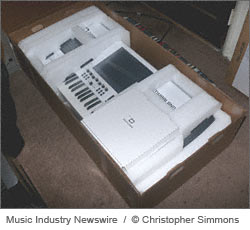 After watching the videos on their website (www.openlabs.com) and on YouTube, reading forum questions and answers, older reviews in the major magazines, etc., I ended up ordering one from the AudioMidi.com folks here in California (also always nice to work with). I do buy a lot from the folks at Sweetwater (shout out to Delvin Wolf), but they didn’t carry the NeKo. Apparently others made the jump on this new model the same time I did, so there was a waiting list (the 37-key version shipped first, which is perhaps more popular with the hip-hop/DJ crowd thanks to smaller size).
After watching the videos on their website (www.openlabs.com) and on YouTube, reading forum questions and answers, older reviews in the major magazines, etc., I ended up ordering one from the AudioMidi.com folks here in California (also always nice to work with). I do buy a lot from the folks at Sweetwater (shout out to Delvin Wolf), but they didn’t carry the NeKo. Apparently others made the jump on this new model the same time I did, so there was a waiting list (the 37-key version shipped first, which is perhaps more popular with the hip-hop/DJ crowd thanks to smaller size).
Getting the box from UPS after about 10 days was a delight as the box was professionally silk screened with Open Labs logos (unexpected quality there), and the packing was very competent for a product of this kind (see photo). Had very much a Christmas morning feel, which is always a good sign. It was not quite as obsessive as some of the Yamaha gear I’ve bought where they must have a custom cardboard factory someplace for all the engineering they put into packing, but far better than a Roland V-Synth keyboard I got where the packing practically had to be broken to get the gear out.
I was a little surprised there were no CD/DVDs, a printed manual, or anything inside the accessory box aside from a hex wrench, a getting started sheet (11×17, color), and power cable. Of course, I then realized that with two 500GB hard drives, the help files, video tutorials and whatnot would be on the TSE, which they were. I still would have liked a small printed manual, but perhaps my dinosaur bones are starting to show on that – in this era of reducing paper waste, and the fact that just about any tech manual is obsolete months after it’s been printed, it’s a good environmental and cost-saving choice.
Once out of the box and on a stand (I’m using the Standtastic 103KSB, seen in the photo) it was a quick shot to plug-in speakers, a second monitor, and start making noise. Thanks to its use of Windows versus a custom version of Linux (ala Muse Receptor), installing virtual synths like IK’s SampleMoog (see photo) or Arturia’s CS80 emulation was as simple as putting the disc in, exiting the GUI, installing the applications under Windows, connected to net for authorization, and done. It took the better part of a day to install various things I wanted to play with like the Korg Legacy collection, some East West instruments, and the now defunct Gigastudio VST instrument.
I really like the front panel (below the pitch/mod wheels) audio controls on the FireBox, for setting headphone and monitor out levels. Having two mic or instrument inputs “right there” at hand is nice, too, without having to remember which input is which on the back or pulling it off the rack to plug something in. The snazzy metal audio knobs have detents so you can actually set a headphone level “just right” and go back to it later. I have been a long time fan of Echo Audio products, and was new to the PreSonus line, but am really liking what they do. Aside from ergonomics, it appears this was a very good choice for “quality” and not just size. Open Labs has pre-set everything installed to run with the drivers (via ASIO), so you don’t have to worry about manually setting anything; and switching from 44 to 48Khz was simple using the ASIO panel.
The Player in the House
One of the things which make this product really fun as a keyboard player is finally being able to treat a virtual instrument as a keyboard. Sure, you may think using a notebook and a MIDI keyboard controller is just as nice, but not as far as I’m concerned. Being able to load up the Korg Legacy Collection Wavestation instrument on the NeKo TSE, and play it “right there” as if the keyboard had morphed into a real Wavestation (I’ve missed mine for years). You can even use your fingertip to move the virtual joystick on screen. Not as fluid as a real joystick, but much better than using the mouse in my opinion. Basically, any virtual instrument which has a standalone mode seems entirely new again when played on the TSE. I had a blast playing IK Multimedia’s SampleMoog on the TSE while writing a review of the software (see photo).
 And, for others without a standalone mode, you’re a few taps away from loading something into Karsyn. I was impressed that Karsyn even has a drop-down menu of “recently added” instruments and “recently used” plug-ins, so when you first install something like Spectrasonics Omnisphere, you don’t have to go hunting through dozens of instrument menus to load it up.
And, for others without a standalone mode, you’re a few taps away from loading something into Karsyn. I was impressed that Karsyn even has a drop-down menu of “recently added” instruments and “recently used” plug-ins, so when you first install something like Spectrasonics Omnisphere, you don’t have to go hunting through dozens of instrument menus to load it up.
There were some minor problems which came up, which was the pitch bend didn’t “center” properly every time, which I hadn’t run into as a problem since the days of my Oberheim XK keyboard controller with levers in lieu of wheels. Also, I found the final D# and F# keys made a “clacking” sound on release. I determined that the metal case top was a hair lower than it could be, and simply taking off the right end panel and holding the case top and re-tightening the right hand side screws solved that. For the pitch bend problem, tech support confirmed this was an issue that they could reproduce, and a week later they had a firmware update which they installed remotely for me over the Internet. No trouble since.
I requested they consider adding an option in mFusion to route the aftertouch to the mod wheel for those applications which don’t support MIDI aftertouch (many don’t), as it can be strange in this day and age to apply pressure and nothing happen. This is not a problem with the NeKo, as some non-owner forum trolls will assert, but lack of aftertouch support in the virtual instrument being played.
The fit and finish of the case is very nice with the exception of a little area under the left side of the keyboard which looked like it should have been sanded prior to painting, as it has a bit of a coin edge versus being smooth which seems out of place with all the rest of the edges on the case.
The controllers work well, although the notebook PC style touch pad for mousing takes a bit getting used to, and is a bit twitchy on some screens, just like a real notebook. I sometimes felt the touch pad was too sensitive and the select buttons required too much pressure. Generally, I found myself using the LCD panel whenever I could. I may end up adding a Logitech cordless USB trackball, maybe not.
The overall presentation feels good; not quite the industrial grade manufacture of some big name workstations, but way way beyond the built-in-garage hot rod approach. This is a mature, commercial product line and it shows.

Inside the Box
When looking inside the case to add some options (see photo), I was really impressed by the Zalman case fan, high quality power supply, high quality memory, very efficient wire routing and tie down, as well as epoxy glue on some of the connectors to keep them from coming loose in transport (essential for gigging). The glue was a nice touch, as I can’t tell you how many times I’ve had to open my DSI Poly Evolver rack mount synth to push the little connector for the front screen that hair’s width needed to make it work again.
For the trolls in some of the forums who complain that the NeKo is nothing more than a PC and a keyboard controller bolted together, it’s worth mentioning the plethora of custom circuit boards inside the case (not shown) which handily disproves that assertion. There is way more engineering in place for this than even I (being a techie guy from way back) was expecting. That’s why it works so well: it’s engineered, not cobbled together.
 I’ve also customized my NeKo TSE by adding an internal FireWire card (mandatory if you want to use another audio I/O box while the FireBox is installed on the main FireWire bus), adding a mini USB hub inside to mount my iLok and Syncrosoft keys, and I’ve added another 500GB hard drive to use for sample libraries. This was done under the auspices of normal upgrades which won’t void my warranty, but you must be careful here if you don’t know what you’re doing (see added note regarding warranty, below -editor).
I’ve also customized my NeKo TSE by adding an internal FireWire card (mandatory if you want to use another audio I/O box while the FireBox is installed on the main FireWire bus), adding a mini USB hub inside to mount my iLok and Syncrosoft keys, and I’ve added another 500GB hard drive to use for sample libraries. This was done under the auspices of normal upgrades which won’t void my warranty, but you must be careful here if you don’t know what you’re doing (see added note regarding warranty, below -editor).
My only complaint was the cost of the brackets to mount the third hard drive, which was about $100 for two brackets and some screws from Open Labs. Sure, it’s custom cut premium aluminum, with grommets for vibration, but considering you can buy an entire Antec PC case for that, it was tempting to simply use the leftover parts I had laying about and tape down an Antec bracket I had (actually I did just that while waiting for the parts to arrive in the mail). Still, the OEM part is nice, but it cost as much as the 500GB hard drive, which seemed wrong somehow. Not evil mind you, just pricey.
Editorial note: after this story had been published, Open Labs requested I add the following note regarding the warranty: “This warranty does not apply: … b) to damage caused by service (including upgrades and expansions) performed by anyone who is not an Open Labs Authorized Service Provider; c) to a product or a part that has been modified without the written permission of Open Labs.” — which basically means if you don’t know how to install a hard drive into a PC already, don’t mess with your NeKo! As I’ve mentioned in my postings to the Open Labs tech support forum, you should always consult the tech gurus at OL prior to doing anything inside your keyboard, unless you truly know what you’re doing. More info: http://openlabs.com/warranty.html .
Other Choices
There isn’t a lot of competition for this product on the market. The Korg OASYS is a closed system, and suffers from a “let’s make everything new” mentality, which walks away from the huge library of sounds of the Triton era, and while it can sort of morph into a few vintage instruments like the MS-20, it can’t become a Wavestation, or stack instruments in place within “combis” to make hybrids of the various technologies included, and the OASYS recording environment is inferior to most software tools, such as Reaper included with the TSE.
The Muse Receptor (www.museresearch.com) is a versatile instrument for touring and studio use, and works very well, but it’s not a keyboard instrument in the same way a workstation like the TSE is. You “hook up” to the Receptor, you don’t “play it.” The Receptor is also currently hampered by the fact it’s running a version of Linux and can’t easily load many Windows plug-ins without special installers. If you need a dedicated box to run Native Instruments or IK Multimedia’s libraries, it’s a good choice for that, but it still requires a DAW and MIDI controller. I found the built-in synth rack to be versatile, but cumbersome, and it is really setup for those who want to program live sets versus just loading something and playing it.
Similarly, the SM Pro Audio V-Machine (www.smproaudio.com) is a standalone VST player in a box, but adds support for Magix Samplitude 9 SE, as well as a nice selection of virtual instruments. The initial product is more geared for musicians using a notebook, and the box has only a 1GHz CPU, so you won’t likely be recording full on game soundtracks with it, but it’s insanely affordable for what it is.
And, yes, you can simply go out and buy a keyboard controller, a notebook, and a USB sound box for portable composing. In fact, I considered buying a top of the line CME or Novation controller with all the knobs and sliders, along with a PreSonus FireStudio, and a new HP TouchSmart 20″ LCD PC and “rolling my own” type of product along these lines. What I found, however, is that the “value add” provided by Open Labs with the NeKo TSE made it exactly what I wanted. The integration of the pieces (the control surface is pre-set to work with the E-MU sound library for instance), and the huge amount of work which has gone in to the pre-sets and a “clean” install of everything on board. It works for me, and I have no regrets about “should have done blah instead.”
Bottom Line
In practice I’ve had zero crashes, downtime, glitches or problems beyond a personal adventure in replacing the FireBox with a couple of PreSonus FireStudio models as the main audio I/O (another story). I now have both working and can choose which to use, depending on what I’m doing. I’ve also added the PreSonus FaderPort and the monitor controller for the FireStudio, which sit perfectly above the PC keyboard on the top left side of the TSE. For those who need additional controllers like drum pads, the new Korg Nano line is perfect as an add-on to the NeKo.
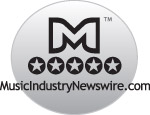 As far as running other DAW applications, Cakewalk Sonar 8 works great, and the only glitch of any kind I’ve had has been the streaming option turned on within Omnisphere, and the screen redraw in most recent update of East West Play engine. However, I don’t consider these to be issues related to the NeKo TSE.
As far as running other DAW applications, Cakewalk Sonar 8 works great, and the only glitch of any kind I’ve had has been the streaming option turned on within Omnisphere, and the screen redraw in most recent update of East West Play engine. However, I don’t consider these to be issues related to the NeKo TSE.
For any keyboard player who wants a real workstation, complete with a vast sound palette, truly usable recording system, and those who also want a great live performance instrument, the NeKo is an excellent and unique choice. Some may find it pricey, but in my opinion it is well worth every penny once you discover everything you’re actually getting.
Summary:
Music Industry Newswire rating: FIVE STARS.
Open Labs NeKo Timbaland Special Edition (TSE)
www.openlabs.com
61-key workstation based on Intel Core2Quad processor, 4GB RAM, two 500GB Hard Drives, dual-layer DVD burner, PreSonus FireBox audio and MIDI I/O. Exclusive sound libraries with 35GB of premium sounds; custom licensed versions of instruments and DAW recording applications. List price: $4999.
PROS:
Good value when all the pieces are priced alone; great integration between instruments and bundled software. Good ergonomics. Great technical support; including remote fixes/updates, prompt email and phone call-back support. They even monitor the tech support forum on their site daily. Extremely playable. It is compatible with all Windows XP applications. PreSonus audio hardware an excellent choice; ASIO drivers seem to work with everything. Upgradeable as technology changes (new motherboard/processors) via upgrade path policy.
CONS:
No printed documentation beyond hook-up sheet; lacking documentation of any kind for certain things like video card settings to enable second display. Bracket for third HD is a bit pricey. A PC build sheet outlining motherboard model, video card capability (resolutions and timings supported), CD/DVD burner specs (in case of firmware update needed); used/open SATA, USB and FireWire ports, and similar data would have been nice to have in the unlikely event the company disappeared.
More information and tech specs on the NeKo TSE:
http://openlabs.com/ .
Article is Copr. © 2008 by Christopher Simmons. All photographs are the exclusive property of, and are Copr. © 2008 by Christopher Simmons, all rights reserved. Article originally appeared on MusicIndustryNewswire.com.
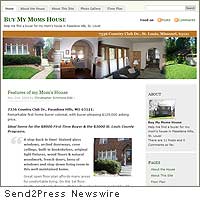 PASADENA HILLS, Mo., Nov. 18, 2009 — A California entrepreneur has put up a Web portal called “Buy My Mom’s House” (www.BuyMyMomsHouse.com) to help sell his mom’s house in Pasadena Hills (St. Louis) Missouri, which has been on the market for a year and, while sitting idle for open houses, has been eating through mom’s savings.
PASADENA HILLS, Mo., Nov. 18, 2009 — A California entrepreneur has put up a Web portal called “Buy My Mom’s House” (www.BuyMyMomsHouse.com) to help sell his mom’s house in Pasadena Hills (St. Louis) Missouri, which has been on the market for a year and, while sitting idle for open houses, has been eating through mom’s savings. As to the premiere of the new “V” last night? Frankly my dear, I was bored out of my mind. So many contrived elements which might have been acceptable in the “old days” of television (remember when they couldn’t show a bare bottom, or say “shit” on TV?), now seem not so quaint but just laughable. We know much more about biology, science, and the universe than we did when the original show was on.
As to the premiere of the new “V” last night? Frankly my dear, I was bored out of my mind. So many contrived elements which might have been acceptable in the “old days” of television (remember when they couldn’t show a bare bottom, or say “shit” on TV?), now seem not so quaint but just laughable. We know much more about biology, science, and the universe than we did when the original show was on.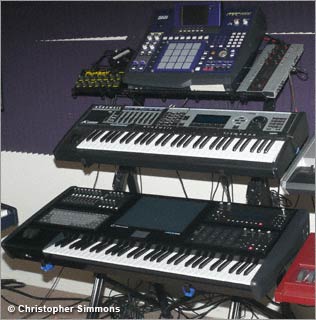 The first thing I found when taking it out of the box is that they still pack the unit very well with the spongy type of foam, not the brittle stuff that breaks into dust when you try to take the item out of the box; this means it absorbs shock better, and can be re-used in the future. So, it’s very well packed to arrive safe and sound, and to protect the LCD touch panel.
The first thing I found when taking it out of the box is that they still pack the unit very well with the spongy type of foam, not the brittle stuff that breaks into dust when you try to take the item out of the box; this means it absorbs shock better, and can be re-used in the future. So, it’s very well packed to arrive safe and sound, and to protect the LCD touch panel.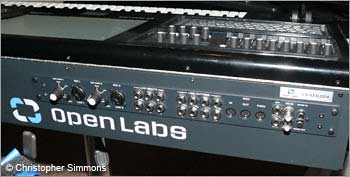
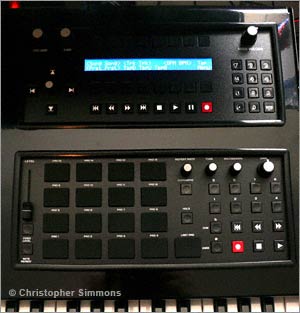 However, there is no standard pre-set on the Alpha II Panel for virtual instruments, which there should be. Of course, there are presets for bundled Reaper DAW, the bundled Ableton Live 7 DAW, and Riff. (To clarify: the default transpose buttons on the Alpha II Panel work while in Riff, which is the default environment for the XXL. It’s only when you leave the Riff environment, go to Windows, and launch a stand-alone application outside of Riff, where they do not.)
However, there is no standard pre-set on the Alpha II Panel for virtual instruments, which there should be. Of course, there are presets for bundled Reaper DAW, the bundled Ableton Live 7 DAW, and Riff. (To clarify: the default transpose buttons on the Alpha II Panel work while in Riff, which is the default environment for the XXL. It’s only when you leave the Riff environment, go to Windows, and launch a stand-alone application outside of Riff, where they do not.)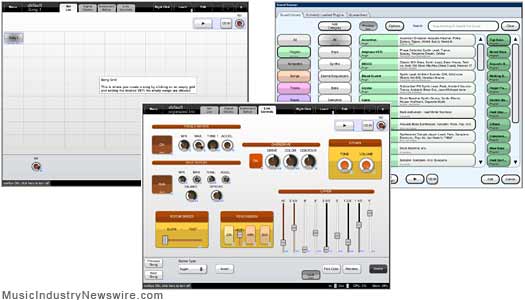
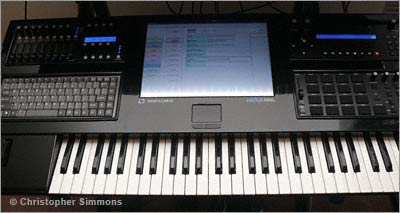
 Certainly, it’s not inexpensive, but it’s far more than a keyboard, a PC, some drivers, and a touch panel bolted into a custom case, which is the mis-conception of the “laptops or die” crowd. If you look inside there are numerous custom circuit boards, intelligent engineering in the layout for cooling, it’s quieter than you expect, even with the fans at full speed (I chose to use the NeKo on a 100-degree day in mid August, with 70 percent humidity, and only one fan on in the corner in my home studio, and the XXL got warm, but I was fading from the heat before it was).
Certainly, it’s not inexpensive, but it’s far more than a keyboard, a PC, some drivers, and a touch panel bolted into a custom case, which is the mis-conception of the “laptops or die” crowd. If you look inside there are numerous custom circuit boards, intelligent engineering in the layout for cooling, it’s quieter than you expect, even with the fans at full speed (I chose to use the NeKo on a 100-degree day in mid August, with 70 percent humidity, and only one fan on in the corner in my home studio, and the XXL got warm, but I was fading from the heat before it was). Now, while this falls about as low as one can get down the pole of what matters in the world right now, below unemployment, health care, and so forth, it’s nevertheless become a rallying cry, or topic du jour for the design community who despair over things as minute as the space between headline letters (ahem, I do that, too, admittedly; it’s called “kerning”), that Ikea has switched from a rich custom type font, to the lowest common denominator, a type face created for the Internet by Microsoft, called Verdana. A style of type which was not designed for print where the lovely bits interact with ink and paper, but for the cold cathode ray tube (CRT), and other display technologies which have evolved into LCD, OLED, plasma, and e-ink.
Now, while this falls about as low as one can get down the pole of what matters in the world right now, below unemployment, health care, and so forth, it’s nevertheless become a rallying cry, or topic du jour for the design community who despair over things as minute as the space between headline letters (ahem, I do that, too, admittedly; it’s called “kerning”), that Ikea has switched from a rich custom type font, to the lowest common denominator, a type face created for the Internet by Microsoft, called Verdana. A style of type which was not designed for print where the lovely bits interact with ink and paper, but for the cold cathode ray tube (CRT), and other display technologies which have evolved into LCD, OLED, plasma, and e-ink.
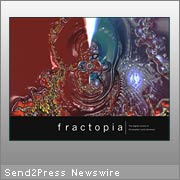

 I’ve been using MIDI gear since it was invented, and this is perhaps the coolest thing since sliced bread, or perhaps since electronic music instruments began talking to each other and learning to do more than make noises all alone. But is it right for you? What other options are out there? Does it work as advertised? Well, as a recent new owner of one of these bad boys, let me tell you the tale of a fateful trip into the land of buying and using such beasts as these.
I’ve been using MIDI gear since it was invented, and this is perhaps the coolest thing since sliced bread, or perhaps since electronic music instruments began talking to each other and learning to do more than make noises all alone. But is it right for you? What other options are out there? Does it work as advertised? Well, as a recent new owner of one of these bad boys, let me tell you the tale of a fateful trip into the land of buying and using such beasts as these. Whether you know who Timbaland (timbalandmusic.com) is or not, it’s useful to know that what he brought to the table in working with Open Labs was the desire for a more streamlined keyboard case decked out in shiny all-white livery, a DJ fader and quick access knobs below the screen, and a special software package that includes the full complement of sounds from the popular Ensoniq (E-MU) ASR-10 keyboard and ASRx beat box/sampler, the EPS (son of the Mirage) and ZR/MR keyboards. Any fan of the defunct Ensoniq products will really enjoy this sound library (more on software, below). This new design makes it more attractive on-stage, but also a little less cluttered from the perspective of a keyboard player. You do lose some of the knobs and sliders, which might not suit a recording studio set-up as well, but considering it’s now about $3,000 less and about twice as powerful, I think it’s a very smart trade-off for most people.
Whether you know who Timbaland (timbalandmusic.com) is or not, it’s useful to know that what he brought to the table in working with Open Labs was the desire for a more streamlined keyboard case decked out in shiny all-white livery, a DJ fader and quick access knobs below the screen, and a special software package that includes the full complement of sounds from the popular Ensoniq (E-MU) ASR-10 keyboard and ASRx beat box/sampler, the EPS (son of the Mirage) and ZR/MR keyboards. Any fan of the defunct Ensoniq products will really enjoy this sound library (more on software, below). This new design makes it more attractive on-stage, but also a little less cluttered from the perspective of a keyboard player. You do lose some of the knobs and sliders, which might not suit a recording studio set-up as well, but considering it’s now about $3,000 less and about twice as powerful, I think it’s a very smart trade-off for most people. After watching the videos on their website (www.openlabs.com) and on YouTube, reading forum questions and answers, older reviews in the major magazines, etc., I ended up ordering one from the AudioMidi.com folks here in California (also always nice to work with). I do buy a lot from the folks at Sweetwater (shout out to Delvin Wolf), but they didn’t carry the NeKo. Apparently others made the jump on this new model the same time I did, so there was a waiting list (the 37-key version shipped first, which is perhaps more popular with the hip-hop/DJ crowd thanks to smaller size).
After watching the videos on their website (www.openlabs.com) and on YouTube, reading forum questions and answers, older reviews in the major magazines, etc., I ended up ordering one from the AudioMidi.com folks here in California (also always nice to work with). I do buy a lot from the folks at Sweetwater (shout out to Delvin Wolf), but they didn’t carry the NeKo. Apparently others made the jump on this new model the same time I did, so there was a waiting list (the 37-key version shipped first, which is perhaps more popular with the hip-hop/DJ crowd thanks to smaller size). And, for others without a standalone mode, you’re a few taps away from loading something into Karsyn. I was impressed that Karsyn even has a drop-down menu of “recently added” instruments and “recently used” plug-ins, so when you first install something like Spectrasonics Omnisphere, you don’t have to go hunting through dozens of instrument menus to load it up.
And, for others without a standalone mode, you’re a few taps away from loading something into Karsyn. I was impressed that Karsyn even has a drop-down menu of “recently added” instruments and “recently used” plug-ins, so when you first install something like Spectrasonics Omnisphere, you don’t have to go hunting through dozens of instrument menus to load it up.
 I’ve also customized my NeKo TSE by adding an internal FireWire card (mandatory if you want to use another audio I/O box while the FireBox is installed on the main FireWire bus), adding a mini USB hub inside to mount my iLok and Syncrosoft keys, and I’ve added another 500GB hard drive to use for sample libraries. This was done under the auspices of normal upgrades which won’t void my warranty, but you must be careful here if you don’t know what you’re doing (see added note regarding warranty, below -editor).
I’ve also customized my NeKo TSE by adding an internal FireWire card (mandatory if you want to use another audio I/O box while the FireBox is installed on the main FireWire bus), adding a mini USB hub inside to mount my iLok and Syncrosoft keys, and I’ve added another 500GB hard drive to use for sample libraries. This was done under the auspices of normal upgrades which won’t void my warranty, but you must be careful here if you don’t know what you’re doing (see added note regarding warranty, below -editor).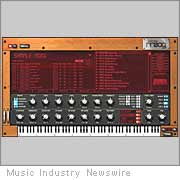 In 1975 (at age 13), I got to play with a Minitmoog for a week, and even though I was asking my parental units for photography gear to pursue my interests in the creative arts, they gave me a choice of the Moog (owned by a business associate who wanted to sell the small keyboard), or a 35mm SLR. I chose the Fujica ST701 camera, bought at a Long Beach pawn shop.
In 1975 (at age 13), I got to play with a Minitmoog for a week, and even though I was asking my parental units for photography gear to pursue my interests in the creative arts, they gave me a choice of the Moog (owned by a business associate who wanted to sell the small keyboard), or a 35mm SLR. I chose the Fujica ST701 camera, bought at a Long Beach pawn shop.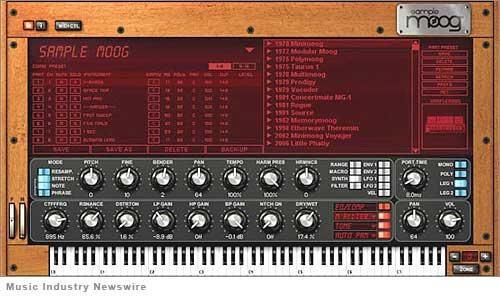
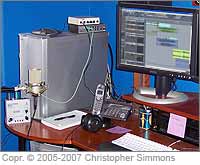 Although it’s technically feasible to record a Podcast from any telephone by setting-up an account with a Podcast Hosting provider, and use an Internet Cafe to check the show, this would be the least likely method used by the average person reading this article series. On the other hand, this method might be ideal for a “world traveler” who is doing a show about a journey or simply on the road a lot.
Although it’s technically feasible to record a Podcast from any telephone by setting-up an account with a Podcast Hosting provider, and use an Internet Cafe to check the show, this would be the least likely method used by the average person reading this article series. On the other hand, this method might be ideal for a “world traveler” who is doing a show about a journey or simply on the road a lot.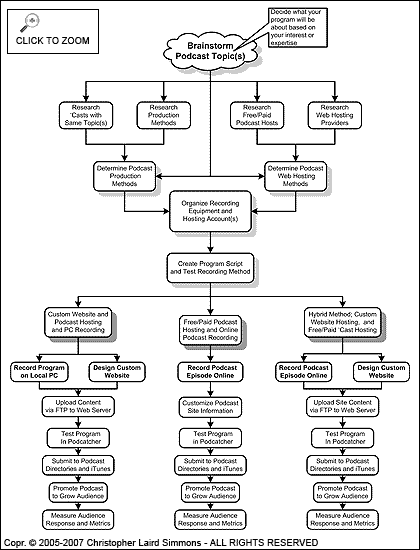
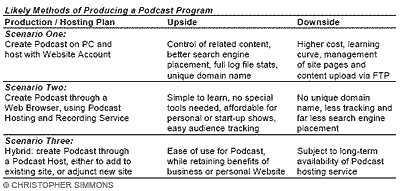
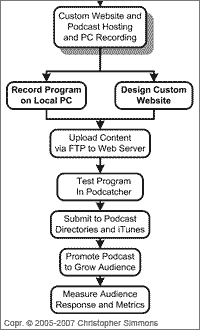 What would you put on an episode page? Well, you could have a page that includes photos of what you’re covering in an audio program, such as an interview; for a music guest, you could have a bio and CD covers, and you can include bibliographic information that might be tedious to listen to or write down for a listener to your show.
What would you put on an episode page? Well, you could have a page that includes photos of what you’re covering in an audio program, such as an interview; for a music guest, you could have a bio and CD covers, and you can include bibliographic information that might be tedious to listen to or write down for a listener to your show. One of the downsides to creating a program that lives on any kind of “free” or “hosted” Website that is not your own, is that when promoting your show, you are actually promoting the site where your show lives as much as your own program. When you have your own site, all of your promotion efforts will always be towards getting folks to visit your site, and if you launch new shows, retire old shows, or “remix” content, it’s all under your control, which is not the case with a “hosted” solution.
One of the downsides to creating a program that lives on any kind of “free” or “hosted” Website that is not your own, is that when promoting your show, you are actually promoting the site where your show lives as much as your own program. When you have your own site, all of your promotion efforts will always be towards getting folks to visit your site, and if you launch new shows, retire old shows, or “remix” content, it’s all under your control, which is not the case with a “hosted” solution. Scenario Three
Scenario Three